DARK SPOTS ON THE MOON SHOW A TURBULENT SOLAR SYSTEM
Hello wonderful people on #Steemit! A very warm greetings to one and all. Hope you all are doing well in your life! Sorry, for getting late this time in bringing up this article. I met an accident two days back and presently I am in bed rest due to which I got late. Anyway, in today's article, we're going to imagine and discuss about the Moon. We're going to be discussing these unusual dark patches on the moon and try to figure out where they actually came from and why is it that only one side of the moon has them?
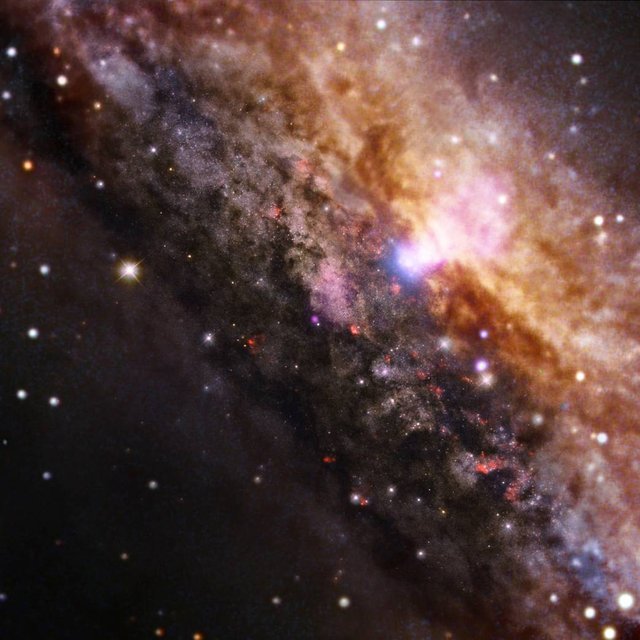
Hope you people will read my article and provide your valuable suggestions and thoughts by commenting below. So, without any further delay let us start the exploration!!
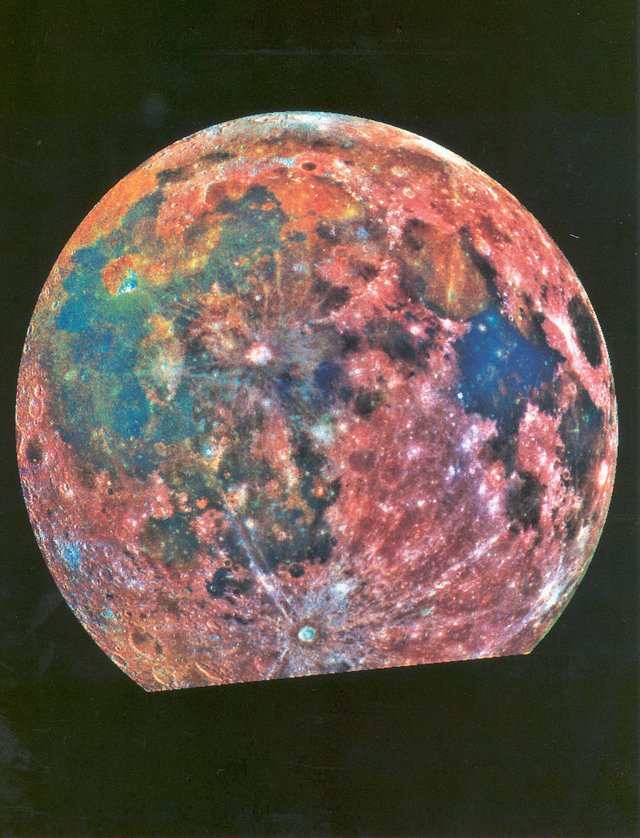
.png)
Now, this might look familiar to you. This is what the Moon looks like from pretty much most of the locations on Earth and these dark spots are also very familiar to us as well. Now, how did they actually form? We are going to have you guess at first! Do you think it was formed through some sort of a collision with a very large amounts of bodies just like you see on the image no.- 3 above or do you think it was formed through some sort of unusual activity on the surface of the Moon that was not related to these collisions or do you think that it was formed by the Sun? Well, take a guess! What do you think?
.png)
.png)
Let me actually show you what the other side of the Moon looks like because in most cases a vast majority of people today have no idea what the so-called dark side of the Moon looks like. Now, the Dark Side of the Moon is not actually dark. As a matter of fact, it gets just as much light as the other side; the one that we're familiar with. The above image no.- 4 is what the current representation of the Moon on the other side looks like and we usually refer to the side as shown in the image no.- 4 the far side with the opposite side as shown in the image no.- 5 being the near side because it literally is the far side and never really comes closer to Earth than it currently is!
.png)
.png)
.png)
The side shown in the above image no.- 5 we never get to see because the moon is tidally locked to our planet. So, only the opposite side with strange patches as shown in the image no.- 6 is visible to us and so for this reason many people assume that moon actually looks like this from all sides. But, it doesn't! The other side as you can see in the image no.- 7 is much brighter, much wider and also doesn't seem to have any of those dark Mare as they're known. Now, the word Mare actually is Latin word for sea. So, a long time ago people actually thought that this is what the lunar oceans look like as shown in the image no.- 8 .
.png)
They literally thought that these were lakes and oceans. But they're not! As a matter of fact, they're just rock. They're basaltic rock; the type of rock that you can also find near most volcanoes on Earth. Specifically, currently there's a lot of basaltic rock being formed on Hawaii Island. Now, what exactly is happening on the moon here? Why is it that one side is so typical of a moon in our solar system? Basically, this is a face of many other moons in our solar system. But the other side, this side in image no.- 9 looks nothing alike! Why does it have these dark patches? What's with those patches and why is it that there's so many of them?
.png)
As a matter of fact, about 31% of the entire surface right here in the image no.- 10 that you're looking at is covered in these dark patches. You don't really find them in pretty much most of the other objects in our solar system. So, what's happening here and the answer that this is actually a little bit counterintuitive! It took a little bit of digging and learning about how and what forms these types of rocks to actually figure it out. The scientists who studied the rocks; the moon rocks specifically discovered that first of all these basaltic rocks are definitely the result of volcanic eruptions.
.png)
In other words, it was not the collisions. It was actually eruptions of volcanoes. It was a lot and a lot of volcanoes and we even see the signs of all volcanism still today if we actually look closer on the surface of the Moon. Now, these volcanoes were not just typical mountains. They were actually basaltic volcanoes where basically the entire moon approximately 3 to 3.5 billion years ago looked very different and let me actually just demonstrate it by taking the help of the simulation image no.- 11 . These volcanoes by essentially colliding an object with the moon just to sort of demonstrate what the entire surface that was facing planet Earth - looked like.
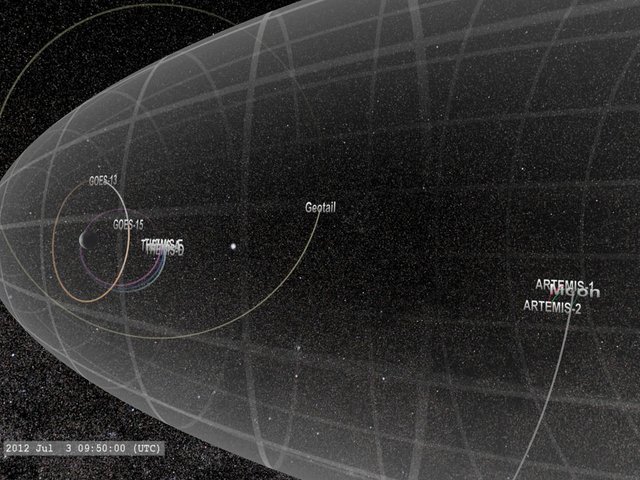
So, that was what you would see in the night skies of early Earth about 3 billion years ago. The moon would actually be almost completely red or at least 30% red. The huge part of it was essentially always bright and always on fire. Interestingly, this could also provide some sort of heat and some sort of illumination for early organisms on Earth as well. But we don't really know what exactly or what kind of effect is exactly had on our planet! What we do know though is that this lasts for many billions of years and we even think or at least seem to detect even earlier volcanic eruptions as early as about 2 million years ago.
.png)
This implies that moon was actually volcanic for billions of years. For many years, it basically had this really cool glow as shown in the image no.- 13 on the surface. But only one side of the moon! Why is it? Well, it's not really entirely yet understood why this happened. But the assumption is that based on the observation of various materials on the surface of the Moon we discovered that everything with the side that serve has those Mares on it seems to also have a lot of so-called thorium. Thorium is actually a relatively interesting radioactive element that is also possibly responsible for heating up the moon.
.png)
So, for some unknown reason and this is still not entirely understood this side of the Moon in the image no.- 14 had a lot of radioactive material in it. While the upper part of the side in image no.- 14 had almost none and this may be because of the way a moon formed. This may be because it just was a luck. But the downward part of the side of the moon in image no.- 14 had a lot more material that as it started to essentially decompose into more stable elements. In other words, as the nuclear material started to slowly release huge amounts of energy; it actually warmed up the downward side of the moon as shown in the image no.- 14 and initiated the volcanic age on the moon.
.png)
The entire surface started to be covered by the early signs of volcanoes and basically then was this as shown in the image no.- 15. It was all molten lava everywhere. Basaltic lava is quite common on Earth. But was a lot more common on the moon back then. All of this was essentially formed through the superhot layers of radioactive materials that were decomposing and creating a lot of energy on that particular side of the moon. But the other side stayed cool. As a matter of fact, the other side had almost none of this. It had almost no volcanoes, had almost no volcanic activity and was much cooler than the side facing the Earth and obviously with time as the volcanoes disappeared and as the volcanic rock solidified we started getting the picture that we get today!
.png)
It basically all became this as shown in the image no.- 16 relatively dark patch or patches that are visible from Earth today. Now, obviously this may have turned out differently for the moon. Especially, if the material was more widespread or if some of the material was also deposited on the other side. But that's not really the point! The point is that during this activity and during this period moon may also had a lot of other materials that were released from the inside and from the upper mantle area of the Moon including of course water.
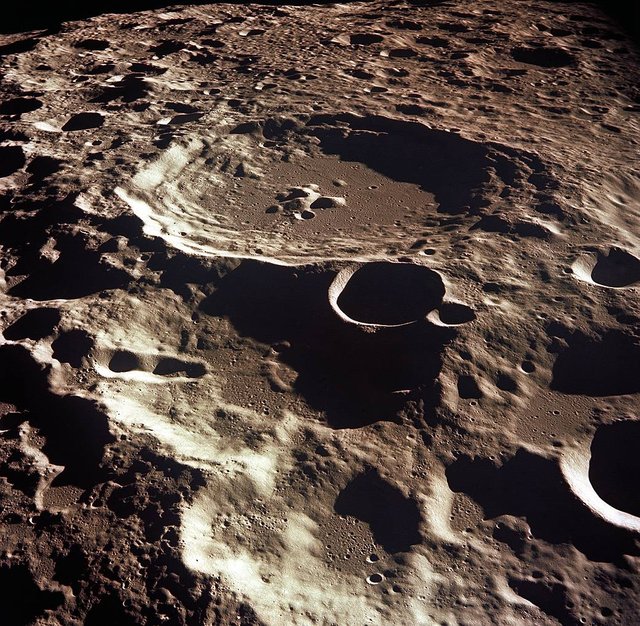
As a matter of fact, a lot of Scientists think that during this period because of all the volcanoes and volcanic eruptions the volcanoes may have generated some sort of a thin atmosphere. So, moon may also had some sort of atmosphere. But also possibly even liquid water flowing somewhere on the surface. All of this is or cannot really be proven until we go back to the moon and study some of the rocks in more detail. But it's based on the observations and the observations indicate that the moon may also had water and other elements such as atmosphere.
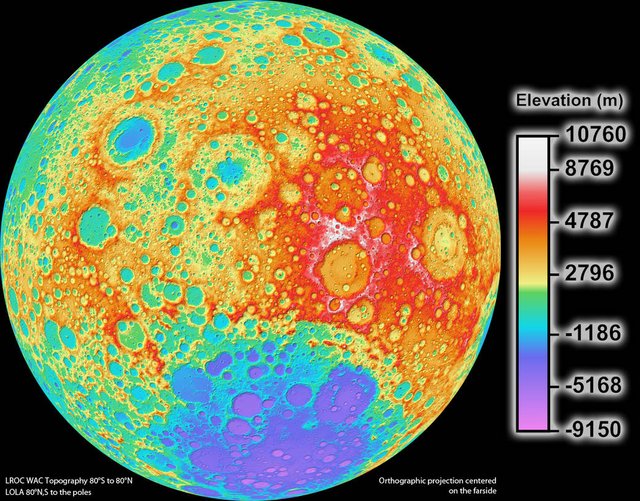
Whether this is true not only the future and future research and possibly future scientific bases on the moon that will allow us to study what's actually happening underneath the crust. But for now though we know for a fact that there were volcanoes on the moon and we also seem to see some signs of water. So, hopefully from this article we all learnt where these unusual dark patches on the moon came from and now we know that these are not really related to collisions. They're actually related to very large volcanoes that were located on the moon billions of years ago. But only on one side!
Thank you so much for reading this article guys and if you've enjoyed reading the information in this article, don't forget to just Resteem for those who enjoys reading space articles and wants to learn more through the information provided here!!

STEEMSTEM
SteemSTEM is a community-driven project that now runs on Steem for more than 1.5 year. We seek to build a community of science lovers and to make the Steem blockchain a better place for Science Technology Engineering and Mathematics (STEM).
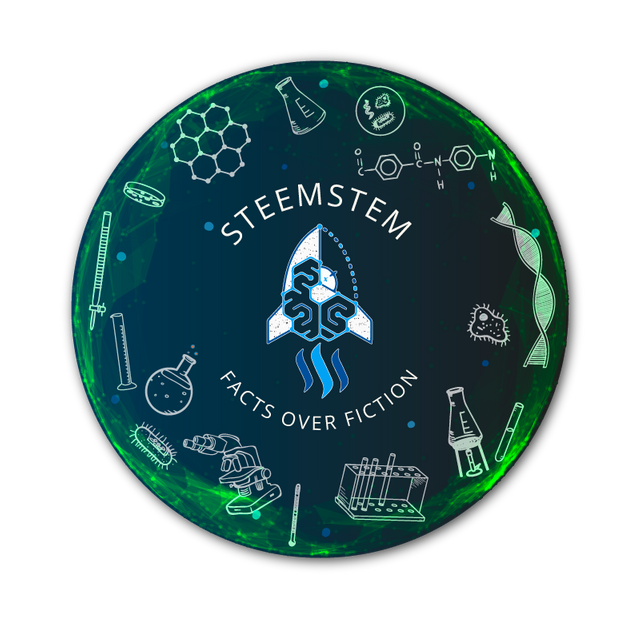
More information can be found on the @steemstem blog, on the discord server and in the last project report. Please also have a look on this post for what concerns the building of our community.

This post has been voted on by the steemstem curation team and voting trail.
There is more to SteemSTEM than just writing posts, check here for some more tips on being a community member. You can also join our discord here to get to know the rest of the community!
STOP! Freeze Frame!